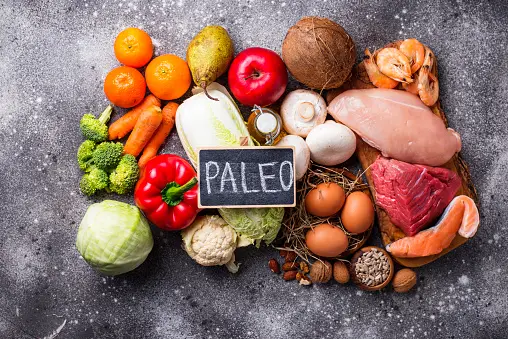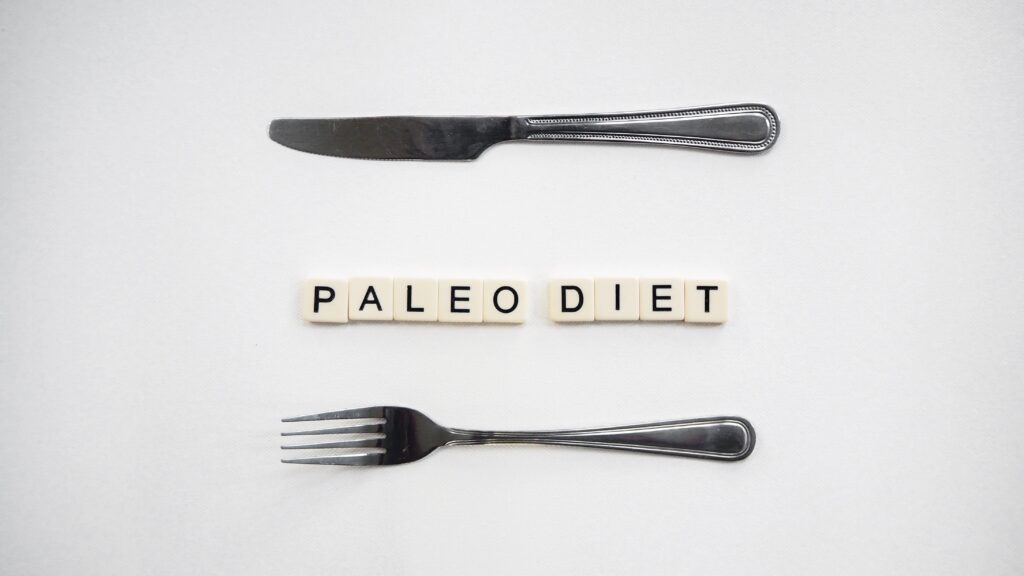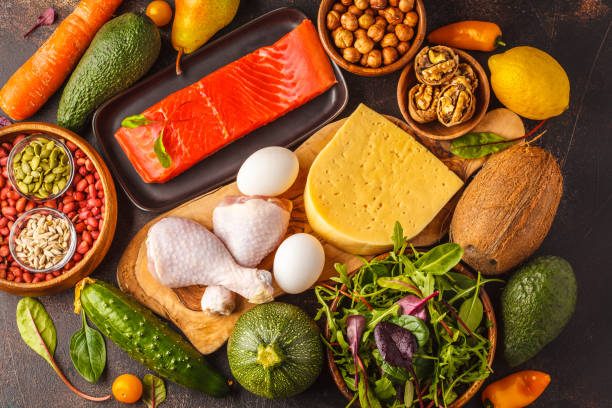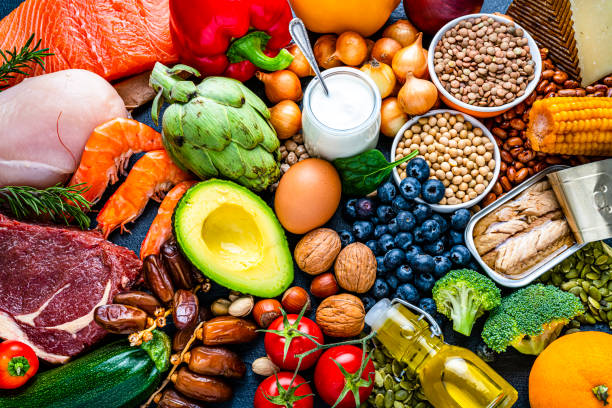
INTRODUCTION
As of late, the Paleo diet has acquired fame as a method for accomplishing better well-being and weight the board by following a dietary example that reflects our precursors’ dietary patterns. This eating routine, frequently alluded to as the “Cave dweller” or “Stone Age” diet, underlines entire, natural food varieties that were accessible to our Paleolithic predecessors. While defenders of the Paleo diet acclaim it for different medical advantages, pundits contend that it might have a few disadvantages. In this exhaustive audit, we will investigate the upsides and downsides of the Paleo diet to assist you with arriving at an educated conclusion about whether it’s the ideal decision for you.
UNDERSTANDING THE PALEO DIET

The Paleo diet, short for Paleolithic eating regimen, has acquired fame lately as a well-being cognizant approach to eating. It is established on the idea of devouring food varieties that our far-off predecessors would have eaten during the Paleolithic period, which goes back over 2.5 million years. The major thought behind the Paleo diet is that our cutting-edge counts of calories are much of the time the underlying driver of numerous ongoing medical problems, and by returning to a more crude approach to eating, we can further develop our general prosperity.
The central rule of the Paleo diet is to zero in on entire, natural food varieties, imitating the dietary propensities of early tracker finders. This implies wiping out or seriously restricting the utilization of grains, vegetables, dairy items and handled food varieties. All things considered, the eating regimen is based on food varieties like lean meats, fish, vegetables, natural products, nuts, and seeds.
Defenders of the Paleo diet contend that it offers a few potential medical advantages. One of the key advantages is the weight of the executives. By removing refined sugars, handled grains, and unnecessary carbs, disciples frequently experience weight reduction. The eating routine’s accentuation on protein and fiber-rich food sources can assist with directing hunger and decrease calorie consumption, prompting a better body weight.
The Paleo diet is likewise accepted to advance better glucose control and decrease the gamble of type 2 diabetes. Restricting high-glycemic file food sources, can assist with balancing out glucose levels and further develop insulin awareness. Besides, the eating regimen might uphold heart well-being by empowering the utilization of lean meats, greasy fish rich in omega-3 unsaturated fats, and heart-solid fats like avocados and olive oil.
SOME MORE BRIEF ABOUT PALEO DIET
One more key component of the Paleo diet is its attention to further developing stomach well-being. By barring grains and vegetables, which might contain antinutrients like lectins and phytates that can aggravate the stomach covering, a few people track down help for stomach-related issues. The accentuation of fiber-rich vegetables and organic products can likewise advance a better stomach microbiome.
Regardless of its likely advantages, the Paleo diet isn’t without its reactions. Pundits contend that it very well may be prohibitive and testing to follow, given the disposal of specific nutrition types. Moreover, it may not give every single fundamental supplement, like calcium and vitamin D, because of the prohibition of dairy items.
The Paleo diet is a dietary methodology that looks to recreate the dietary patterns of our Paleolithic predecessors. It underlines entire, natural food varieties while barring grains, vegetables, dairy, and handled things. This diet has acquired prevalence for its possible advantages, including weight executive, glucose control, heart well-being, and further developed stomach well-being. In any case, it may not be reasonable for everybody, and it’s fundamental to talk with a medical services professional before rolling out critical dietary improvements. Understanding the standards and likely benefits and impediments of the Paleo diet is essential for anybody thinking about this wholesome methodology as a method for working on their well-being and prosperity.
PROS OF THE PALEO DIET

The Paleo diet, otherwise called the Paleolithic or mountain man diet, has earned huge consideration lately for its potential medical advantages. While it may not be appropriate for everybody, it offers a few masters that have drawn in numerous devotees. Beneath, we investigate the upsides of the Paleo diet in more detail.
EMPHASIS ON WHOLE, NUTRIENT-DENSE FOODS:
One of the vital aces of the Paleo diet is its attention to entire, natural food sources. It empowers the utilization of lean meats, greasy fish, vegetables, natural products, nuts, and seeds. These food varieties are plentiful in fundamental supplements, including nutrients, minerals, and cell reinforcements, which are valuable for general well-being.
WEIGHT MANAGEMENT:
Weight reduction is a shared objective for some people, and the Paleo diet can be a powerful method for accomplishing it. By removing handled food sources, refined sugars, and grains, individuals frequently devour less unfilled calories and experience normal weight reduction. The eating regimen’s high-protein and high-fiber content can assist with controlling hunger, making it more straightforward to keep a sound body weight.
IMPROVED BLOOD SUGAR CONTROL:
The Paleo diet’s emphasis on low-glycemic record food varieties settles glucose levels. By keeping away from high-carb and high-sugar food varieties, it can lessen insulin spikes and further develop insulin responsiveness. This is especially invaluable for people with prediabetes or type 2 diabetes.
HEART HEALTH:
The Paleo diet advances heart well-being by empowering the utilization of lean meats, greasy fish (wealthy in omega-3 unsaturated fats), and sound fats like avocados and olive oil. These parts can add to bring down degrees of terrible cholesterol (LDL) and fatty substances, lessening the gamble of coronary illness.
IMPROVED GUT HEALTH:
The end of grains and vegetables, which contain antinutrients like lectins and phytates that can aggravate the stomach lining, can prompt superior stomach-related well-being for certain people. The eating regimen’s accentuation on fiber-rich vegetables and organic products can likewise uphold a solid stomach microbiome, which assumes a vital part in by and large prosperity.
REDUCED INFLAMMATION:
Persistent aggravation is connected to different ailments, including immune system infections, coronary illness, and disease. The Paleo diet is low in food varieties that might set off aggravation, like handled sugars and grains, making it a calming diet. Consuming various products of the soil further adds to diminishing aggravation because of their rich cell reinforcement content.
ALLERGEN ELIMINATION:
For individuals with food sensitivities or awarenesses, the Paleo diet can give alleviation. It avoids normal allergens like dairy and gluten-containing grains. By wiping out these possible triggers, people with sensitivities might encounter fewer side effects and work on prosperity.
NO CALORIE COUNTING:
Dissimilar to certain eating regimens that require fastidious calorie counting, the Paleo diet centers around food quality as opposed to amount. By picking supplement-thick food sources, people can frequently eat to fulfillment without following each calorie devoured.
IMPROVED ENERGY LEVELS:
Numerous disciples of the Paleo diet report expanded energy levels and decreased exhaustion. This is frequently ascribed to the disposal of energy-depleting handled food sources and the utilization of supplement-rich, adjusted dinners.
SUSTAINABLE FOOD CHOICES:
The Paleo diet supports the utilization of entire food varieties that are commonly more manageable and harmless to the ecosystem. It puts an accentuation on nearby and occasional produce, diminishing the carbon impression related to food creation and transportation.
CUSTOMIZABILITY:
The Paleo diet can be adjusted to individual inclinations and dietary limitations. For instance, those following a veggie lover or vegetarian way of life can change their eating routine to reject creature items while as yet profiting from the accentuation of entire, plant-based food sources.
While the Paleo diet offers a few benefits, it’s fundamental to note that it may not be reasonable for everybody. A few people might find it trying to wipe out whole nutrition classes, like grains and vegetables, from their eating routine. Besides, people with explicit ailments or nourishing requirements ought to talk with a medical services professional before rolling out critical dietary improvements.
The Paleo diet is a dietary methodology that stresses entire, natural food varieties while barring grains, vegetables, dairy, and handled things. Its geniuses incorporate weight the executives, further developed glucose control, heart well-being, stomach well-being, diminished aggravation, allergen disposal, no calorie counting, further developed energy levels, supportable food decisions, and adaptability. These advantages have made the Paleo diet an appealing choice for some looking to work on their general well-being and prosperity. Nonetheless, individual inclinations and dietary limitations ought to be considered before embracing this eating plan.
CONS OF THE PALEO DIET

While the Paleo diet has acquired prominence for its potential medical advantages, it isn’t without its portion of reactions and disadvantages. It’s fundamental to think about both the upsides and downsides before choosing if this dietary methodology is ideal for you. Here are a portion of the cons related to the Paleo diet:
Elimination of Food Groups:
One of the main reactions of the Paleo diet is the end of whole nutrition classes, including grains, vegetables, and dairy. This can prompt supplement lacks now and again. Grains, for instance, are a decent wellspring of fiber, B nutrients, and fundamental minerals like magnesium and iron. Barring these nutritional categories might require cautious wanting to guarantee healthful necessities are met.
Limited Calcium Intake:
Dairy items are an essential wellspring of calcium in many eating regimens. Since the Paleo diet prohibits dairy, people may not be getting adequate calcium. Deficient calcium admission can expand the gamble of osteoporosis and bone-related issues, particularly if other calcium-rich food sources aren’t sufficiently remembered for the eating routine.
Potential Fiber Deficiency:
While the Paleo diet advances the utilization of leafy foods, a few varieties of the eating regimen may not give sufficient fiber to ideal stomach-related well-being. Grains and vegetables are amazing wellsprings of dietary fiber, and their prohibition can bring about decreased fiber consumption, possibly prompting clogging and other stomach-related issues.
Cost and Accessibility:
The Paleo diet can be more costly to follow because of the accentuation on top-notch, natural, and grass-took care of meats and other premium fixings. This can make it less open for people on a limited spending plan.
Inflexibility:
The severe standards of the Paleo diet can make it try to eat out or eat in group environments. This can prompt social segregation and challenges in keeping up with the eating routine over the long haul.
Low Carb Content:
While the Paleo diet can be powerful for weight reduction, the lower sugar content may not be appropriate for everybody. Competitors and people with high-energy necessities might find it trying to meet their energy needs on a low-carb diet.
Lack of Long-Term Research:
The Paleo diet is somewhat new in the realm of nourishment, and there is restricted long-haul research on its belongings. While certain examinations recommend potential medical advantages, more exploration is expected to grasp the drawn-out ramifications of following this eating routine, especially concerning heart well-being, bone well-being, and manageability.
High Saturated Fat Intake:
Contingent upon decisions inside the eating routine, a few people might consume more elevated levels of immersed fats, especially if they center around red meat. Extreme immersed fat admission can increase the gamble of coronary illness, so it’s vital to select lean cuts of meat and consolidate an assortment of protein sources.
Environmental Impact:
While the Paleo diet advances the utilization of economically obtained food varieties, it may not be the most harmless to the ecosystem choice for everybody. The accentuation on creature items, particularly if not obtained reasonably, can add to ozone-depleting substance emanations and other ecological worries.
Potential for Overconsumption:
A few people may overconsume food varieties like nuts and dried organic products, which are calorie-thick. This can prompt accidental weight gain on the off chance that part measures are not painstakingly controlled.
Difficulty for Vegetarians and Vegans:
The Paleo diet is intrinsically creature-driven, which can make it trying for veggie lovers and vegetarians to follow. While it very well may be adjusted to oblige plant-based consumes fewer calories, it may not line up with the moral or ecological standards of these dietary decisions.
The Paleo diet, while offering potential medical advantages, isn’t without its portion of disadvantages. These cons incorporate the disposal of fundamental nutrition types, restricted calcium and fiber admission, inflated costs, rigidity, low starch content, restricted long haul research, high immersed fat admission, possible natural effect, the gamble of overconsumption, and difficulties for veggie lovers and vegetarians. Before embracing the Paleo diet, it’s urgent to painstakingly think about the two upsides and downsides and talk with a medical care proficient or enrolled dietitian to decide whether it’s a reasonable dietary methodology for your singular necessities and objectives.

CONCLUSION
The Paleo diet offers a few possible advantages, including further developed glucose control, weight reduction, and the utilization of entire, natural food varieties. It might likewise assist with lessening the admission of handled food varieties and advance supplement thick decisions. Notwithstanding, it has its drawbacks, including the disposal of entire grains, restricted food decisions, and expected wholesome lacks.
Whether the Paleo is appropriate for you relies upon your singular inclinations, dietary necessities, and way of life. Before making any huge dietary changes, it’s fitting to talk with a medical care proficient or enrolled dietitian who can give customized direction. Eventually, the way into a solid eating regimen is to find a reasonable and practical methodology that lines up with your particular well-being and health objectives.
FAQs
Long-term studies don’t offer much information on how the paleo diet affects health. However, the diet has the potential to be a healthy way of eating. The typical paleo diet focuses on naturally raised meat and fish, as well as vegetables and fruits. It promotes avoiding dairy products and grains.
The researchers found that the paleo diet was linked to lower heart disease, or cardiovascular, risk factors. The lower risk mostly came from avoiding highly processed foods, such as chips and candy, and eating lots of fruits and vegetables.
Restrictive diets like paleo are hard to stick to over time. Paleo takes away many delicious and healthy food options, making it harder to follow as a long-term eating plan. Evidence shows people often stop following the paleo diet because it’s too hard to make and sustain such big changes to their diet.

